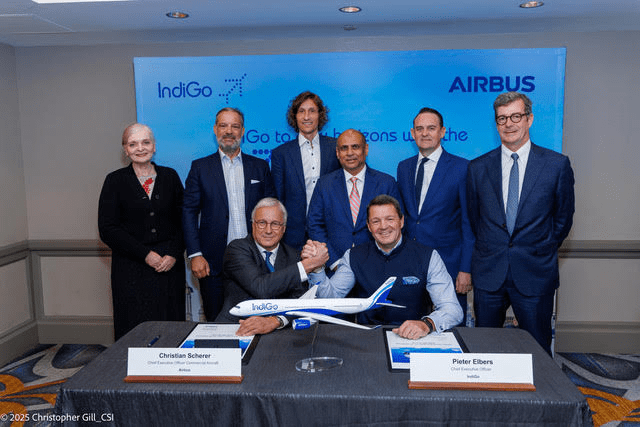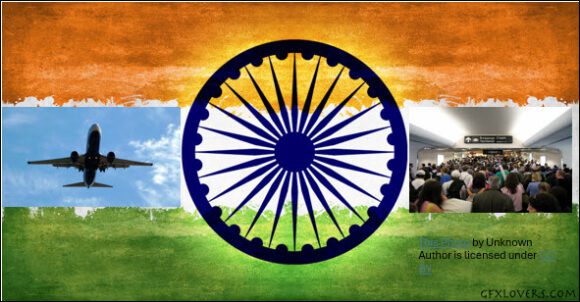
Indigo Airbus
Nearly four months after the fatal Air India 787 crash, India’s aviation industry is putting that dark chapter behind it and accelerating toward an ambitious new phase of fleet expansion. The world’s fastest-growing aviation market is witnessing an unprecedented race for widebody aircraft.
India has already overtaken the U.K. to become the world’s third-largest domestic aviation market, according to IATA, and is forecast to double passenger traffic by 2035.
India’s largest carrier, IndiGo—now the world’s fourth most valuable airline by market capitalization—firmed up an order for 30 additional A350-900 jets last week. This takes its total widebody orderbook to 60 aircraft, with deliveries expected to begin by late 2027.
The airline’s initial 30-plane order in 2024 marked its entry into long-haul operations after nearly two decades of flying only Airbus A320-family jets and ATRs. IndiGo has since experimented with widebody operations by wet-leasing two Boeing 777s from Turkish Airlines over the last two years and six Norse Atlantic Airways aircraft to serve London, Manchester, Amsterdam, and Copenhagen in 2025. Including these leased planes, IndiGo will effectively operate around eight widebody aircraft.
“The conversion of this MoU (Memorandum of Understanding) into a firm order for 30 additional A350-900s is a testament to our confidence in the future of Indian aviation and our partnership with Airbus,” said IndiGo CEO Pieter Elbers, adding that Rolls-Royce will power the fleet.
How Does This Compare to Air India?
Air India operates about 60 widebody jets—primarily Boeing 787s, 777s, and Airbus A350s—within a fleet of roughly 200 aircraft (or more than 300 including Air India Express). Its orderbook includes 74 additional widebodies: 20 Boeing 787s, 10 777Xs, and 44 Airbus A350s. Deliveries begin in December, with images of its new-livery A350s already circulating online.
Yet Air India’s appetite for expansion doesn’t seem to be slowing. The airline is reportedly in talks with Airbus and Boeing for an additional 80–100 widebody aircraft, part of a potential 300-plane mega-order, according to Reuters. While details remain unclear—such as the split between firm orders and options—the deal is expected to be divided between the two dominant manufacturers.
By exploring another large order, Air India could be aiming to secure delivery slots beyond 2030, when its current 500-plane orderbook will near completion. The carrier may also be planning to eventually replace older Boeing 787s and 777s as it transitions to a modern long-haul fleet, even though it is retrofitting its older planes currently.
Strategically, Air India continues to position itself as India’s primary international airline. At the same time, IndiGo—though now encroaching on that space—still derives a large part of its revenue from domestic routes. Both airlines, however, appear united in one belief: the Indian government will no longer grant the kind of generous bilateral flying rights to Gulf carriers (Emirates, Etihad, Qatar Airways) that diverted the country’s long-haul traffic to the Middle East hubs ultimately landing in US and Europe. Despite several high-level diplomatic visits, the Indian government has held firm on this stance. This policy indirectly benefits both Air India and IndiGo which are focussing on non-stop flights to those key regions.
For Boeing and Airbus, this evolving dynamic is a boon. Together, Boeing and Airbus are now securing long-term widebody jet orders from India like never before—underscoring the country’s emergence as a decisive force in shaping the next decade of global aviation demand.
Views: 704



